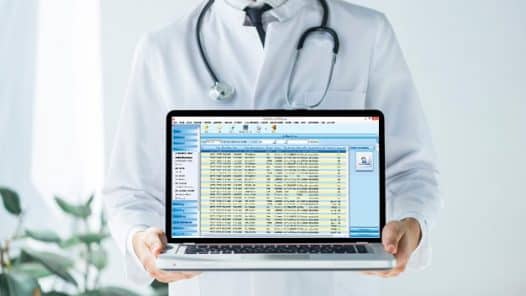A laboratory automation strategy’s selection of a LIMS software system is crucial. The laboratory operating system is the Laboratory Information Management System (LIMS). In this post, we’ll take a look at the best LIMS software.
A LIMS (Laboratory Information Management System) is software that helps you to handle samples and data efficiently. Your lab can automate workflows, integrate instruments, and manage samples and associated data with the help of a LIMS. You can also obtain more consistent results faster and track data from sequencing runs over time and between experiments to increase productivity.
Laboratory Information Management System LIMS
The term “LIMS” has no relevant definition because you can use it to refer to a variety of laboratory informatics components. The LIMS implementation determines The breadth and depth of these components. There is a workflow component in every LIMS, as well as certain summary data management capabilities, but there are considerable disparities in capability beyond that.
The LIMS, LIS, and process development execution system (PDES) have all served comparable purposes in the past. The word “LIMS” has come to be associated with informatics systems used for environmental, scientific, or commercial purposes, such as pharmaceutical or petrochemical research. In the forensics and clinical industries, “LIS” has tended to relate to laboratory informatics systems, which typically required specialized case management tools. The term “PDES” has been applied to a broader range of applications, such as virtual manufacturing techniques, without necessarily implying integration with laboratory equipment.
The functionality of LIMS has recently expanded beyond its basic aim of sample management. Many LIMS now include assay data management, data mining, data analysis, and electronic laboratory notebook (ELN) integration, allowing translational medicine to be realized entirely inside a single software package. Furthermore, the line between LIMS and LIS is becoming increasingly blurred, as many LIMS now fully support detailed case-centric clinical data.
What is a LIMS System
A LIMS, or laboratory information management system, is a type of software that keeps track of data linked with samples, experiments, laboratory workflows, and devices in order to improve lab productivity and efficiency. A LIMS works as an extension of your team, automating workflows and keeping track of all the critical sample data, workflows, and QA/QC findings that your lab generates each day.
A modern LIMS has progressed from a sample-based tracking system to the laboratory’s digital backbone. It is a tool that aids in the management of efficiency and expenses. A LIMS is more than just a database for keeping track of your samples, scientific data, and outcomes. It helps you to keep track of everything in your lab, from equipment maintenance to samples to people and consumables. A laboratory information management system (LIMS) organizes laboratory samples and data, standardizes operations, decreases human error, and boosts productivity.
Best LIMS System
On our list below Laboratory administration capabilities such as sample tracking are in all of the software packages. That is exactly what these systems are for. Most of them also contain tools to assist lab managers and workers in streamlining relationships with reagent and supply providers.
LabVantage
LabVantage is a market leader in the LIMS space. They claim to have “the most modern LIMS platform available,” which, while unclear, is backed up by tight integration between their electronic lab notebook (ELN), lab execution system (LES), and LIMS solution. With capabilities like as labor assignment and research planning, the service is expressly designed to make the job of lab managers easier. Automated issue tracking, bulk data upload, and data management are all included in the solution.
LABWORKS
LABWORKS promises to be the most reliable, adaptable, user-friendly, and simple-to-implement LIMS system on the market.
LabCollector
AgileBio, a French software business, has developed LabCollector. LabCollector was arguably the first LIMS to offer both a browser-based interface and a pricing that small businesses could afford when it was debuted in 2002.
CoreLIMS
Since 2017, CoreLIMS has been a product of Core Informatics, a division of ThermoFisher. It boasts a cutting-edge design that makes use of cloud-based scalability. They enable third-party developers to create customized apps that extend LIMS’ core functionality. Core Informatics is the only LIMS vendor we know of that has succeeded in creating a thriving app marketplace, but the marketplace’s recent progress under Thermo leadership is unclear.
iLab
iLab is an Agilent’s laboratory management software. This product is more concerned with resource management than with data management.
STARLIMS
Abbott Informatics’ STARLIMS is a comprehensive LIMS system that includes the entire lifecycle management. “From sample intake to accurate results delivery, [to] enabling wiser decision making for your organization and customers across the entire process,” it boasts. They also provide logistics management services, including product inventory, storage capacity, and other services.
eLABNext
Bio-ITech BV, which is now part of Eppendorf, developed eLABNext, originally eLabJournal. This platform includes several solutions for sample tracking, lab notebooks, and protocol management.
BioVIA LIMS
BioVIA LIMS claims to be more focused on execution than on samples. This solution looks to be more suited to the biotechnology business than to preclinical research.
Examplar Research LIMS
Exercising Research Sapio Sciences’ LIMS is a product. This product is available in a variety of flavors for several businesses, including research, sequencing, and histology. On the vendor’s website, there is very little information on the product architecture, deployment choices, or features.
Autoscribe Informatics
Matrix of Autoscribe Informatics Gemini is a laboratory information management system (LIMS) that helps laboratories manage massive amounts of data while boosting efficiency, automation, and turnaround times. One of the most important elements of Autoscribe’s LIMS software is a collection of setup tools for quickly creating optimized but highly adjustable workflows.
LabWare
LabWare was a forerunner in the LIMS sector. Their LIMS is now available in both desktop and cloud versions.
A web-based specimen management solution is available from BSI.
System LIMS Software Solution for Free
For research groups on a budget, there are a few open source and free LIMS choices to explore. Open source LIMS solutions may be particularly appealing to research groups with strong IT support.
- BikaLIMS: This open-source project, run by a South African team, has been in operation since 2002. You can tailor this platform to certain industries. According to our findings, it may be more suited for production labs rather than research labs.
- The Klavins lab at the University of Washington is now working on an aquarium LIMS. It’s a process-centric program that a number of synthetic biology labs have successfully implemented.
- Another process-centric LIMS created with synthetic biology in mind is LeafLIMS.
- Quartzy is a completely free tool for managing a single area of laboratory management: supply procurement. with an exzemption of Other LIMS functionalities, such as sample management.
Frequently Asked Question
What are the core components of LIMS?
Sample tracking, protocol execution, and storage organization are the three main components of a good LIMS. Imagine a lab where different researchers track samples in different ways, using everything from a pen and paper to a large database.
How does the LIMS system work?
A LIMS keeps thorough and precise records of each sample and securely saves them, lowering the risk of data being lost or jumbled up as it moves between workers and departments. The system will create a thorough record as you record the initial sample, including, Who or what the sample was obtained from.
What is the difference between LIS and LIMS?
Perhaps the most significant distinction is that a LIS excels at processing individual records, whereas a LIMS excels at processing large sets of records at once. When it comes to lab interfaces, there is no such thing as a “best” system; there is just the system that is better for your individual needs.
- PROJECT TRACKING SOFTWARE: Reviews of Top 25 Project Tracking Software
- Project Management Software: 31+ Top Best PM Software For Business
- Email Tracking: 7 Best Email Tracking Tools
- Project Management Reporting: Examples, Software & Tools
- Project Planning Software: 60+ Best Software in 2021 (Free & Paid Options)







1 comment
Good post, however a lot of the LIMS solutions posted here are the top vendors, most of these aren’t always the best option to use for smaller businesses for example. Perhaps a list with the lesser known yet budget friendly options available could help people?